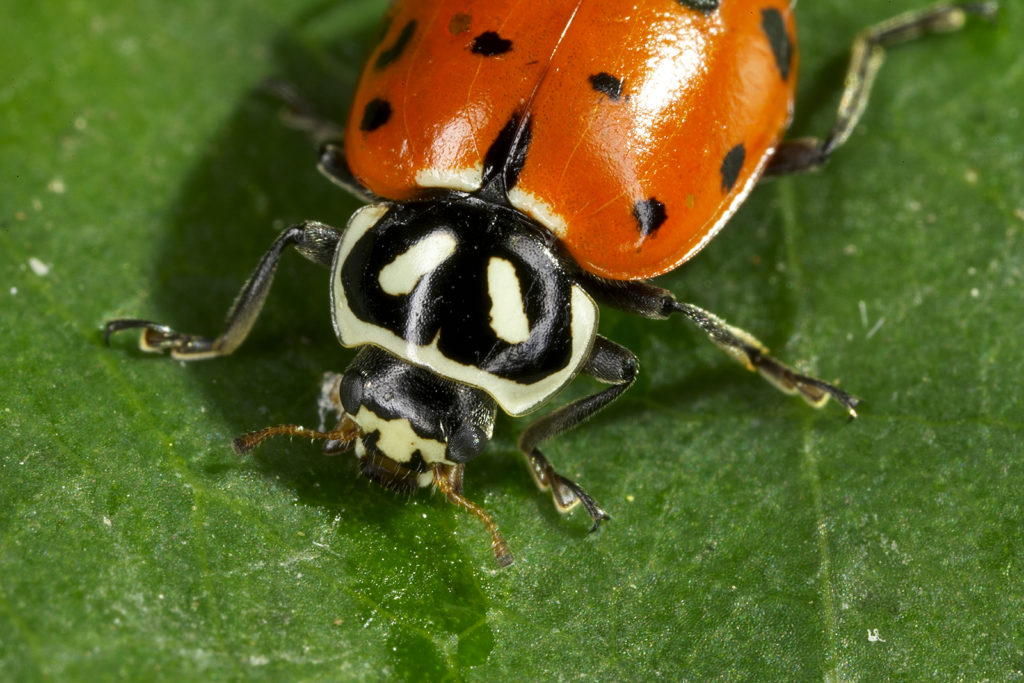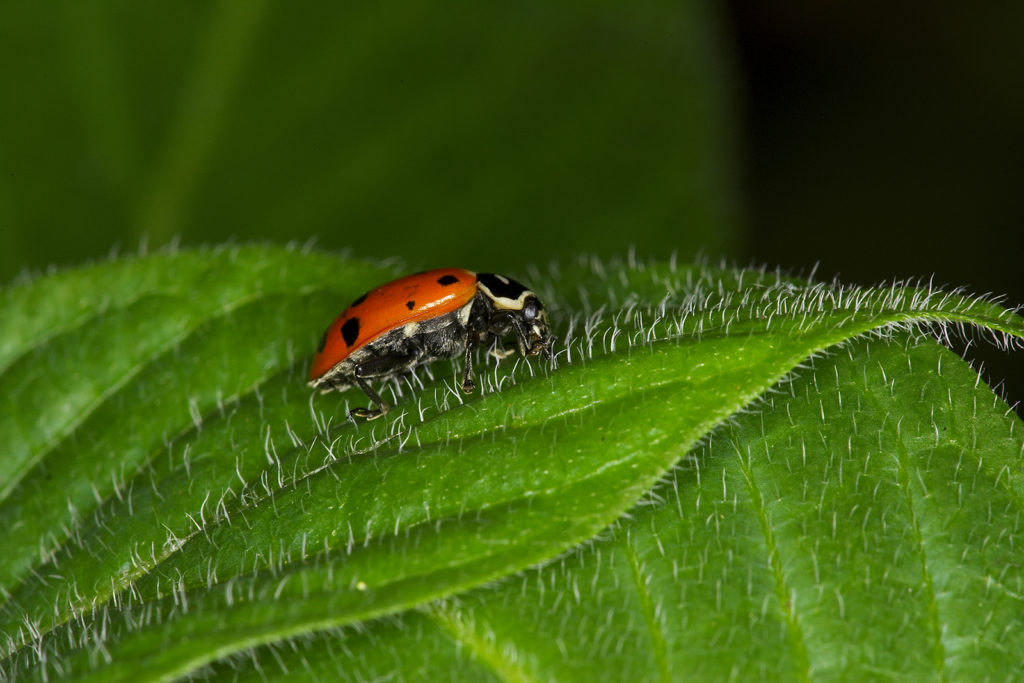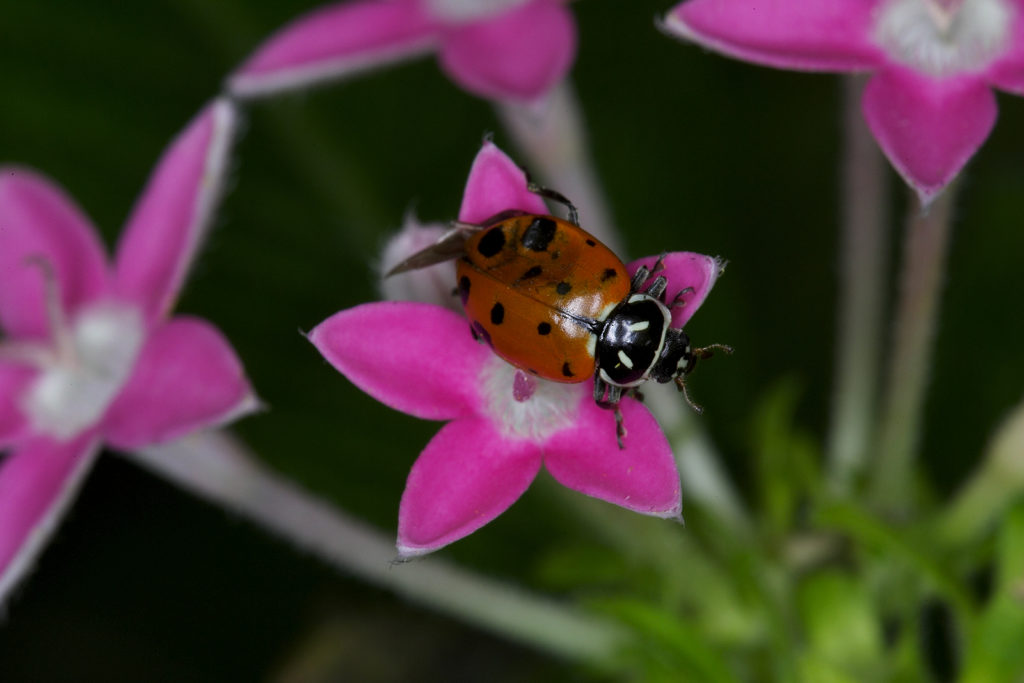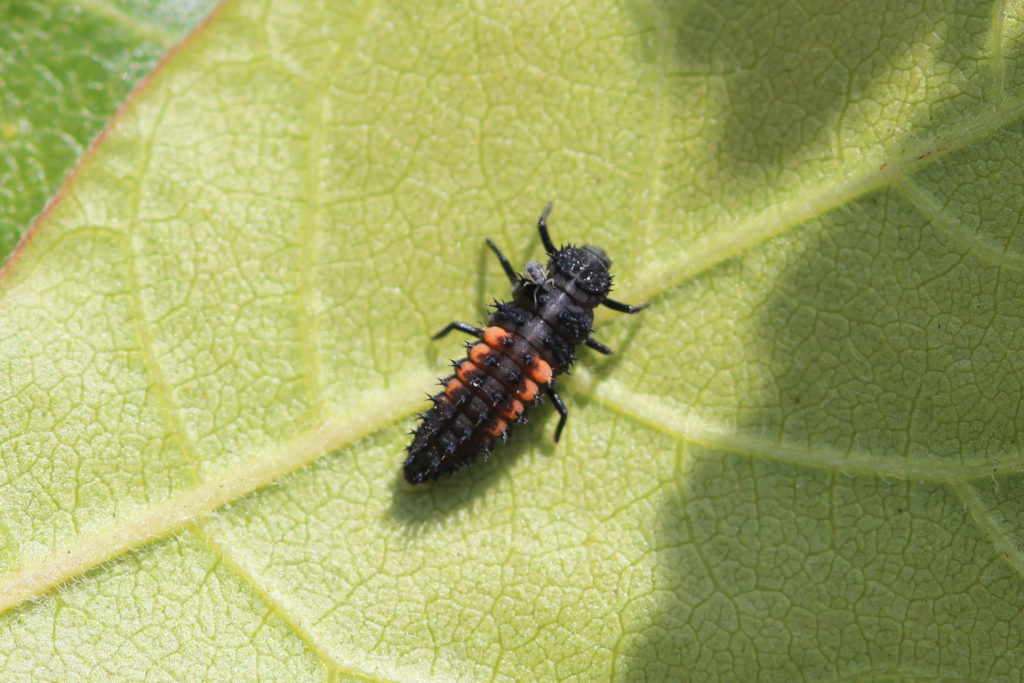As a little kid growing up in Seattle, springtime always held the expectation of longer, warmer days amidst blinding blue skies and a symphony of flower blooms. Along with the smell of fresh cut grass and lilacs bursting with their purple glory came the onslaught of my favorite insect: the ladybug. Even my most cherished piece of kid jewelry represented the little round creature—a pendant where you pushed on its head and the red, sparkly wings snapped open to reveal a clock. It was cool! Outside, my grandmother would patiently hold my hand near a ladybug until it walked onto me, confident as a lion, while I turned my fingers this way and that to observe its urgent trek. Never stinging, biting, or even giving me the stink eye, ladybugs always seemed like genuine friendship material, if not a bit flighty. Ladybugs have a few super powers I didn’t learn about until I was grown up—my grandmother was right to introduce them to me. Now it’s my turn to share the secrets and magic of this little insect.

There are about 5,000 ladybug species, with about 175 species in California. The most familiar type in the US is the seven-spotted ladybug sporting the classic shiny, red-and-black dome. My grandmother told me that the number of spots indicated how old the ladybug was, and while not scientifically accurate—some species live 2 to 3 years, regardless of the number (or absence) of spots—it did improve my counting skills and facilitate a fascination with observing wildlife. The seven-spotted ladybug is actually native to Europe, but was brought to North America in the mid-1900s to control the crop-consuming aphid population. No wonder they are considered a good luck charm in many cultures!

Ladybugs are also known as lady beetles or ladybird beetles. Why so feminine? Thank our friends across the pond—European farmers prayed to the Virgin Mary when pests began devouring their crops and were rewarded with swarms of ladybugs who wiped out the invaders; they were thus named “beetle of Our Lady.” This morphed into “ladybird beetle,” “lady beetle” and finally, fondly, “ladybug.” Speaking of morphing, ladybugs go through remarkable changes to arrive at the endearing creature we enjoy seeing.

Change is in the Air
Ladybugs (like butterflies) undergo four stages in their life cycle: egg, larva, pupa, and adult. First, a female ladybug lays her tiny, golden eggs on the underside of leaves, ideally near an aphid colony. Some of the eggs are infertile, which serve as food for the fertile larvae. Food scarcity determines the ratio of fertile to infertile eggs, according to InsectCop. When these larva hatch, they look like tiny alligators with six little legs and spikes on their orange spotted, black back. They squiggle around in your garden feasting on aphids and mites. They shed their outer skeleton several times during this phase. Next, they find a secure spot for a two-week period of “lockdown” and form a cocoon. This is the pupa stage. At last, it magically transforms into an adult ladybug! Upon emerging, its exoskeleton is soft and light in color—it takes a few hours for it to harden and darken.

Change is in the Air Part II
Have you ever seen a ladybug in the winter? Me neither! It’s likely because these little rascals congregate in large groups (no social distancing needed) to hibernate, or diapause, as it is called in the insect world. Not only does it serve as “match.com” for ladybugs (yes, there are male ladybugs!), but it also helps them stay warm and conserve energy in the absence of food. They gather in logs, buildings, ground cover, and even beneath snow drifts. Incredibly, ladybugs can diapause for up to nine months with nothing to eat or drink! They emerge in the spring when the weather warms to 55 degrees Fahrenheit and food becomes available (watch out, aphids, they are hungry!). And that’s when people of all ages can pause in wonder at these lucky little harbingers of spring.
Karyl Carmignani is a staff writer for San Diego Zoo Global. Read her previous blog, Beckoning Birds, Bees, and Other Beings: Why Flowers Are So Colorful.




